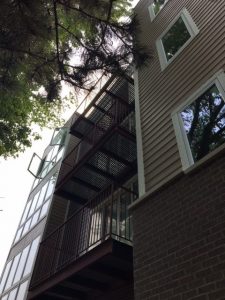Luxury Rental Housing – Rising Demand
 Although the majority of Americans own their home, the preference for rental housing is on the rise, especially in the luxury market. Developers are responding to the demand by creating attractive, new rental options.
Although the majority of Americans own their home, the preference for rental housing is on the rise, especially in the luxury market. Developers are responding to the demand by creating attractive, new rental options.
Rentals are in Demand
The number of people living in rental units in metro areas increased by 22 million between 2006 and 2014, according to a recent report by New York University Furman Center and Capital One.
A number of factors have contributed to the rise in rental housing desirability:
- Changes in demographics have resulted in a higher population of adults in their 20s as well as an increase in the number of aging Baby Boomers.
- The Great Recession resulted in home foreclosures and an increase in suburban renters.
- Since the Recession, household incomes are reduced and job insecurity is high.
- Because of the housing bubble, loan underwriting standards are more stringent, so mortgages are more difficult to obtain.
- Millennials are a more mobile generation and are less connected to a specific physical location.
- Improvements in technology and our ability to connect with family and friends online have reduced the importance of physical proximity. As a result, more people are willing to live a more mobile lifestyle.
- Baby-boomer homeowners are moving toward a rental model, as their children move out and their space needs decrease.
- The rising cost of city housing has pushed some city dwellers to the suburbs, where apartments and rental houses are more affordable.
- Developers are creating attractive, new rental options in response to consumer interest.
Renter Profiles
In the past, renters were typically younger people with smaller households and lower incomes. Although Millennials are thought to make up the majority of today’s renters, older renters are also a factor. Today, the rental housing boom includes every age group, household size, and income level.
A 2016 survey by the Joint Center for Housing Studies of Harvard University found that renters are people of any income level or age. A newer trend in the rental market is the growth of middle-age renters. Baby Boomers and Generation-Xers are selling their homes in exchange for the ease and lifestyle amenities of rental housing. In fact, renters earning over $100,000 are the fastest growing segment, making up 11% of the total rental market.
Millennials
- Renting provides a less expensive and more flexible option.
- Many recent college grads are saddled with large loans and have less available to invest.
- Renting is generally cheaper and less time-consuming than home ownership.
- Young adults are delaying marriage and home buying into their 30’s and beyond, further contributing to the demand for rental housing.
- The uncertainty of the job market also makes renting more attractive.
- Millennials value having the flexibility to move to change jobs or relocate to a different city.
Baby-Boomers
- Older renters may be empty nesters and seniors who want to simplify their lives.
- Home ownership can be time-consuming and many renters are happy to leave that work to their landlords.
- Some older people sell their home and redirect their home equity to current expenses or savings for future needs.
- Downsizing to a smaller space, eliminating stairs, and lowering cost of living are all common reasons for seniors to consider rental housing.
- When seniors are no longer driving, renting near the town center allows them to walk to the theater, library or grocery store.
- Older, working professionals sometimes choose to rent due to flexibility. Job locations can change frequently and renting gives people more flexibility with moving.
Developers Respond to Rental Demand
Property developers are responding to increased demand by remodeling older properties and developing new mixed-use properties.
New Apartment Projects
An interesting new trend in the rental market is the development of the luxury rental market – upscale units are being built at an unprecedented pace. According to RentCafe, 75% of new rental apartments built in 2015 were high-end units.
Developers are building higher end apartments for Millennials and Baby Boomers, offering unique amenities such as high-end gyms, concierge services, and luxurious common areas. The target market is higher earners who work from home and travel frequently for their jobs or for leisure. These renters are looking for flexibility and the amenities that are commonly found in the high-end hotels.
Remodeled Rental Housing
Property developers are also responding to the needs of renters by remodeling existing rental properties. The existing older properties are refurbished with features that renters have come to expect: granite countertops, stainless steel appliances, an open floor plan, and durable, easy to clean flooring.
To meet the rising demand for rental apartments in Libertyville, Northline Apartments was developed in the downtown area, within easy walking distance of stores, restaurants, and public transportation.
The apartments include many of the most desired features: floor-to-ceiling windows, an open floor plan, granite countertops, stainless steel appliances, resilient flooring, 42-inch kitchen cabinets, beautiful views, elevator, heated garage, storage room, and in-unit laundry facilities.
Rental housing is more desirable than ever – for all age groups and a broad spectrum of incomes, especially in the luxury sector. Rental vacancy rates are low in the current market due to the high demand for rentals, both for apartments and houses. Attractive, new rental options with desirable amenities are being developed to meet the rising demand for rental housing.




